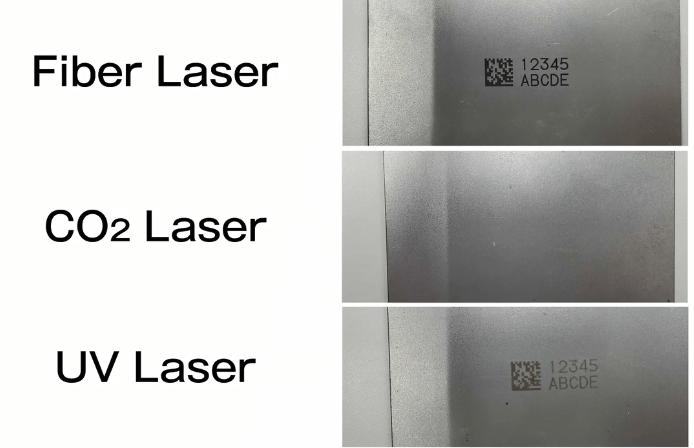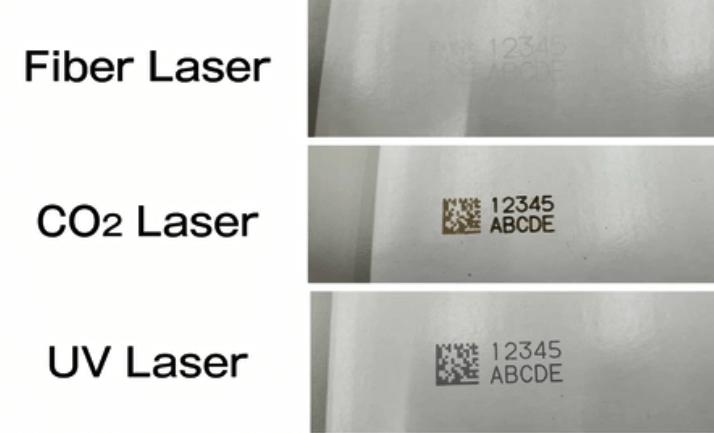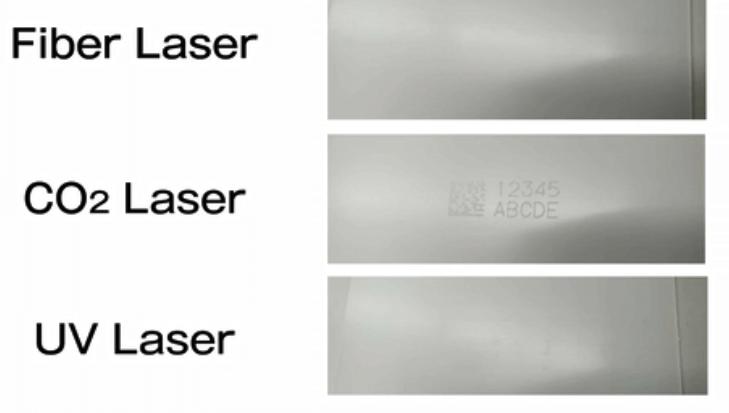
- English
- Español
- Português
- русский
- Français
- 日本語
- Deutsch
- tiếng Việt
- Italiano
- Nederlands
- ภาษาไทย
- Polski
- 한국어
- Svenska
- magyar
- Malay
- বাংলা ভাষার
- Dansk
- Suomi
- हिन्दी
- Pilipino
- Türkçe
- Gaeilge
- العربية
- Indonesia
- Norsk
- تمل
- český
- ελληνικά
- український
- Javanese
- فارسی
- தமிழ்
- తెలుగు
- नेपाली
- Burmese
- български
- ລາວ
- Latine
- Қазақша
- Euskal
- Azərbaycan
- Slovenský jazyk
- Македонски
- Lietuvos
- Eesti Keel
- Română
- Slovenski
- मराठी
- Srpski језик
Fiber vs CO2 vs UV laser marking
2024-04-18
Metal - Iron
Fiber Laser: The surface of the iron shows clear and contrasting marks.
CO2 laser: Metal barely absorbs the CO2 laser beam, so there are no visible marks on the material surface.
UV laser: Creates low contrast marks.

Metal brass
Aluminum brass is a highly reflective metal, and we usually add oxygen to fiber laser cutting brass. If you use a fiber laser to mark brass with only nitrogen, no marking marks will appear.
CO2 laser: Metal barely absorbs the CO2 laser beam, so there are no visible marks on the material surface.
UV laser: Copper absorbs UV laser quickly, making high-contrast marking very easy

Non-metal-white cardboard
We can clearly see that CO2 lasers provide the clearest markings for non-metallic materials. However, it should be noted that when marking flammable non-metals such as wood, cardboard and fabric, the CO2 laser marking machine needs to be set to a low power setting with air assistance. This will prevent non-metals from burning.

Non-metal-acrylic
For these transparent non-metallic materials, such as glass, clear plastic or acrylic, CO2 lasers provide the best marking results. If you want the UV laser marking machine to achieve the same effect when marking acrylic, you need to apply colored pigments to the acrylic surface or art tape.

In short, fiber laser marking machine is the best choice for metal marking, and CO2 laser marking machine is the best choice for non-metallic materials. If you want to be able to mark metal and non-metal materials and don't need very clear contrast, you can choose a UV laser marking machine.



